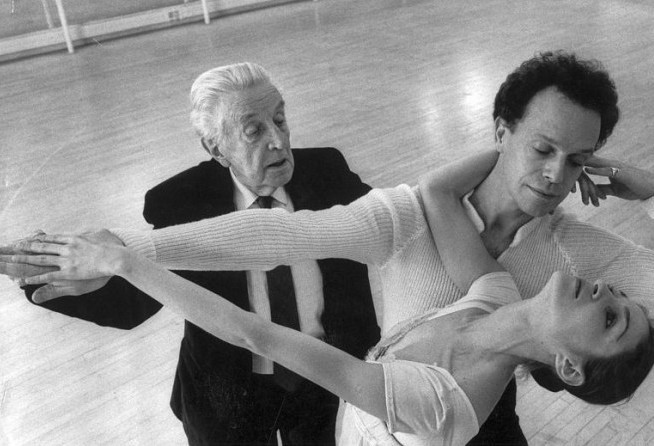Britain's gift to the ballet world: Who is Frederick Ashton?
Ashton brought contemporary English ballet a rich repertoire to its current international reputation.

British dancer and choreographer. It brought contemporary English ballet to its current international reputation.
He was born on September 17, 1904, in Guayaquil, Ecuador. He took lessons from famous dancers, choreographers, and ballet instructors Leonid F Massin and Marie Rambert. He started choreography in 1926. After dancing in Ida Rubinstein's company between 1928 and 1929, he returned to the Rambert Ballet Company. Meanwhile, he worked as a choreographer in ballet companies Ballet Club and Camargo Society.
In 1935 he became the chief choreographer of the Vic-Wells Ballet. He continued to work with this ensemble, which later became the Sadler's Wells Ballet and most recently the British Royal Ballet. He became the assistant director of the ensemble in 1952 and its director between 1963-1970. He has worked as a choreographer in many ensembles, including the London Festival Ballet, the Royal Danish Ballet, and La Scala Ballet.
Ashton's first choreography was A Tragedy of Fashion for the Hammersmith Revue in 1926.
This was followed by the Capriol Suite, which he prepared for the Rambert Ballet Company in 1930 and is described as his first successful work. Ashton's mastery of adapting the distinctive French dances of Peter Warlock's music to the setting of Elizabethan England was met with interest.
Ashton accompanied the famous ballerina Alicia Markova in Façade, which he choreographed in 1931, and in the Mephisto Waltz in 1934. He choreographed Les Rendezvous ("The Encounters") in 1933 for the Sadler's Wells Ballet, Apparitions ("The Images") in 1936, and Le Baiser de la Fee ("The Fairy's Kiss") in 1935.
Ashton reached a classical understanding of ballet with his attitude that left out everything that contradicted the lyrical expression of the piece and dared to be simple. In 1950 he choreographed Illuminations for the New York City Ballet with texts by Rimbaud and music by Britten. The success of the work led to Ashton being summoned to the United States for a new study. Picnic at Tintagel, which he prepared in 1952 upon this call, is considered among the works of the choreographer's mastery period.
Romeo and Juliet (1955), which he made for the Royal Danish Ballet, is one of his works of this period. With his subsequent work in Birthday Offering, Ashton proved to be an equivalent choreographer to renowned French choreographer Marius Petipa. In 1960, his choreography for La fille mal gardee ("The Girl Who Wasn't Well Overlooked") aroused interest with his detachment from Naturalism, without shying away from comedic elements and exaggeration in the image.
Enigma Variations, dated 1968, is among Ashton's ambitious works with the importance he gives to non-dance expression.
In his early years, Ashton was influenced by famous choreographers such as Nijinski, Massin, Pavlova, Duncan and Petipa, and gradually reached a lyrical and classical understanding with a soft, fluent, and high musical sensitivity. Stage designer Sophie Fedorovic and composer and conductor Constant Lambert had a great influence on the success of the artist, who also demonstrates his mastery in creating new works and adapting historical ballets with flawless technique. Ashton brought contemporary English ballet a rich repertoire to its current international reputation.
WORKS (mainly):
A Tragedy of Fashion, 1926;
Capriol Suite, 1930, mus. Warlock;
Façade, 1931, muse. wahon;
Les Rendezvous 1933, muse. Auber,
Mephisto Valse, 1934, muse. Liszt,
Le Baiser de la Fee, 1935, muse. Stravinsky,
Apparitions, 1936, mu. Liszt-Lambert,
Les Patineurs, 1937, muse. Meyerbeer-Lambert,
Symphonic Variations, 1946, mu. Franck,
Illuminations, 1950, mu. Britten,
Picnic at Tintagel, 1952, muse. look,
Romeo and Juliet, 1955, mus. Prokofiev;
Birthday Offering, 1956, mu. Glazunov,
La Fille mal gardee, 1960, mus. Herold-Lanchbery,
The Dream, 1964, mu. Mendelssohn-Lanchbery,
Enigma Variations, mu. E. Elgar, 1968,
Rhapsody, 1980, mu. Rachmaninov.
